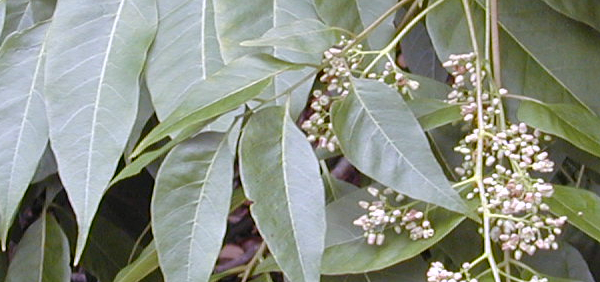Vshyamaka :
 Saccharum officinarum, sugarcane, is a large, strong-growing species of grass in the genus Saccharum. It originated in New Guinea[1]. Muslims brought it to contemporary Spain (Andalusia, between Málaga and Motril), the only place in Europe where it grows. It arrived in the New World with the Spanish and is now cultivated in tropical and subtropical countries worldwide for the production of sugar and other products.
Saccharum officinarum, sugarcane, is a large, strong-growing species of grass in the genus Saccharum. It originated in New Guinea[1]. Muslims brought it to contemporary Spain (Andalusia, between Málaga and Motril), the only place in Europe where it grows. It arrived in the New World with the Spanish and is now cultivated in tropical and subtropical countries worldwide for the production of sugar and other products.HISTORICAL AND MYTHOLOGICAL REVIEW:
Saccharum officinarum was first domesticated in New Guinea and the islands east of the Wallace Line by Papuans, where it is the modern center of diversity. Beginning at around 6,000 BP they were selectively bred from the native Saccharum robustum. From New Guinea it spread westwards to Island Southeast Asia after contact with Austronesians, where it hybridized with Saccharum spontaneum.Taxonomical Classification
Kingdom: Plantae - Plants
Family: Poaceae
Genus: Saccharum
Species: Saccharum officinarum
VERNACULAR NAMES
English: sugar cane, sucanat, turbinadoSynonyms
Synonyms in Ayurveda: shyamakaRasa: Madhura
Guna: Guru Snigdha
Veerya: Sheetha
Vipaka: Maduram
Karma: Pittahara Vatahara
Phytochemistry:
Flowers containsugars and calcium oxalate.Juice contains sucrcose, glucose, and fructose. Asparagine and glutamine are prominent amino acids.Phenolicsin culms of sugar caneare phenylpropanoidssuch as caffeic, chlorogenic, and coumaric acids while apigenin, tricin, luteolin derivatives, andflavones appeared in lower amounts.S. officinarumis the main source of glycolic acidPHARMACOLOGY:
Stem of S. officinarumact as laxative and diuretics, and have cooling effect4.It is used byMalays as a protective medicine against meroyan. Pulp is used for covering wounds. Sugar cane is used by Borneofor the treatment of fractures. Sugar cane extract is used by Chinese traditional medicine for promoting expulsion of phlegm from respiratory passages and for stimulating gastric activity. It is also used against various skin diseases such as, abscess, ulcers, and wounds,and for other infectious diseases such as, chest pain, eye inflammations, and sore throat5.Juice of the stem is used in Ayurvedic Pharmacopoeia of Indiafor haemorrhagic diseases and anuria.Root is used in dysuria6.It is also used in folk medicine as a remedy for arthritis, bedsores, boils, cancer, colds, cough, diarrhea, dysentery, fever, hiccups, inflammation, laryngitis, opacity, penis skin, sores, sore throat, spleen, tumors,and wounds7.
S. officinarumpossesses antioxidant and anti-inflammatory properties10.Hydroxyaceticacid and glycolic acidsare important constituents of S. officinarumandeffective way for battle with skin aging signs. It is also perfect in recovering from acne and for the removal of blackheads
Parts used for medicinal purpose
Stem, ,Morphology:
Perennial, culms 3 – 6 m tall, 2 – 5 cm in diam., erect , internodes variously coloured, green, yellow, brown, red, purple or combinations in strips, often waxy, juicy, sweet, glabrous. Sheaths glabrous or pubescent, older ones deciduous; collar large and prominent; ligule membrane c. 5 mm long, usually ciliolate; blades mostly 1 – 2 m X 3 – 6 cm, glabrous except just above the ligule. Spikelets 2.6 – 4 mm long; lower glume 2.8 – 4 mm long, herbaceous. Anthers yellow, stigmas purple.Geographical distribution:
S. officinarumis widely cultivated and found in Pakistan. It is also cultivated in hotter parts of India4. Sugar caneis found in the tropics andsouth-east AsiaAyurvedic Formulations:
Common Ayurvedic Formulations of Vshyamaka with their IndicationsSukumaram Kashayam
- » Classification and names of Vshyamaka
- » Synonyms and definitions of Vshyamaka
- » Drug Properties of Vshyamaka
- » Chemical Constituents of Vshyamaka
- » Standardization of Vshyamaka
- » Parts used and Dosage of Vshyamaka
- » Morphology and Histology of Vshyamaka
- » Distribution and Conservation of Vshyamaka
- » Cultivation of Vshyamaka
- » Vshyamaka in the market
- » Medicinal Uses of Vshyamaka
- » Researches and clinical trails of Vshyamaka
- » Vshyamaka in other sytems of medicine
- » Ayurvedic formulations with Vshyamaka
- » Images of Vshyamaka












